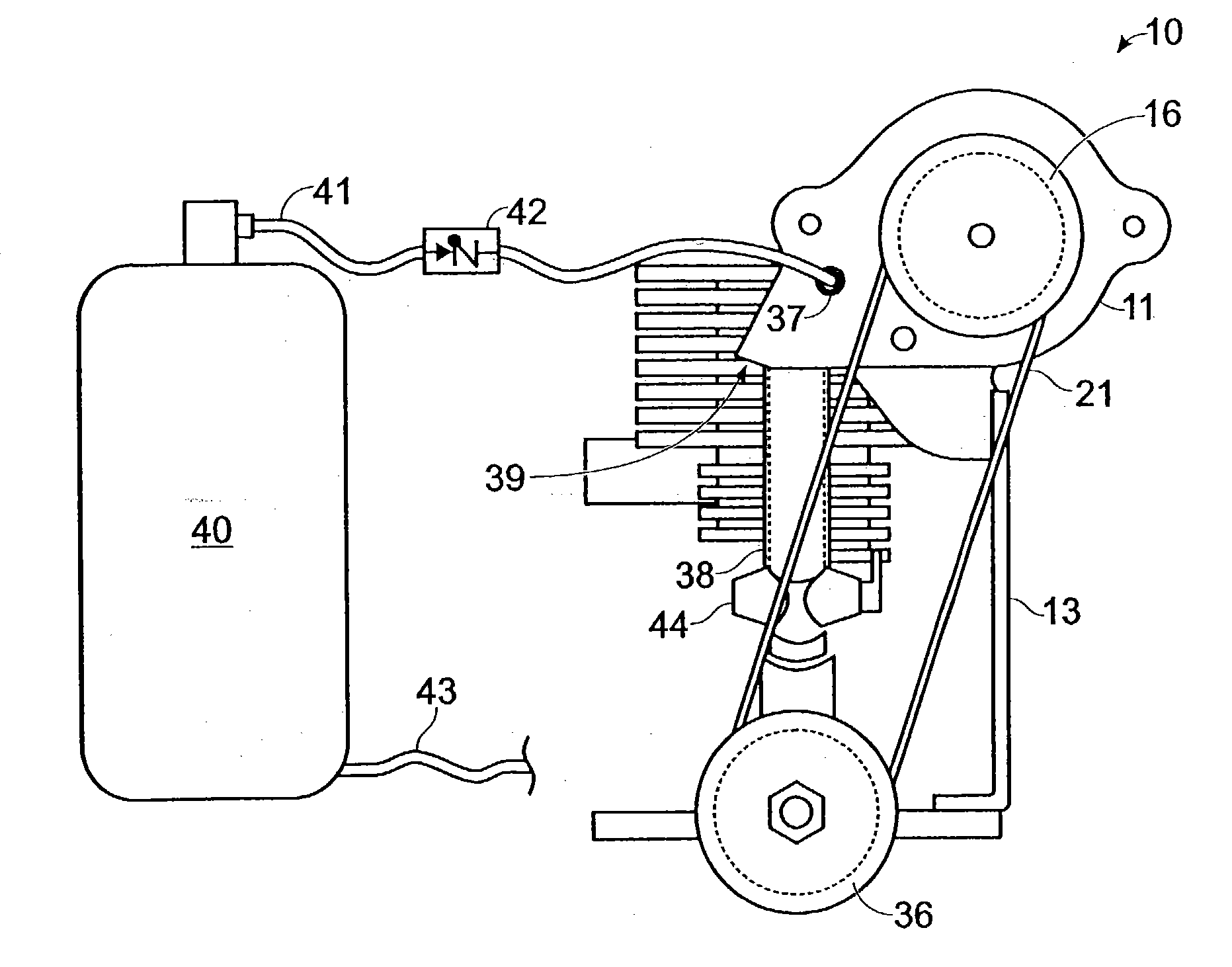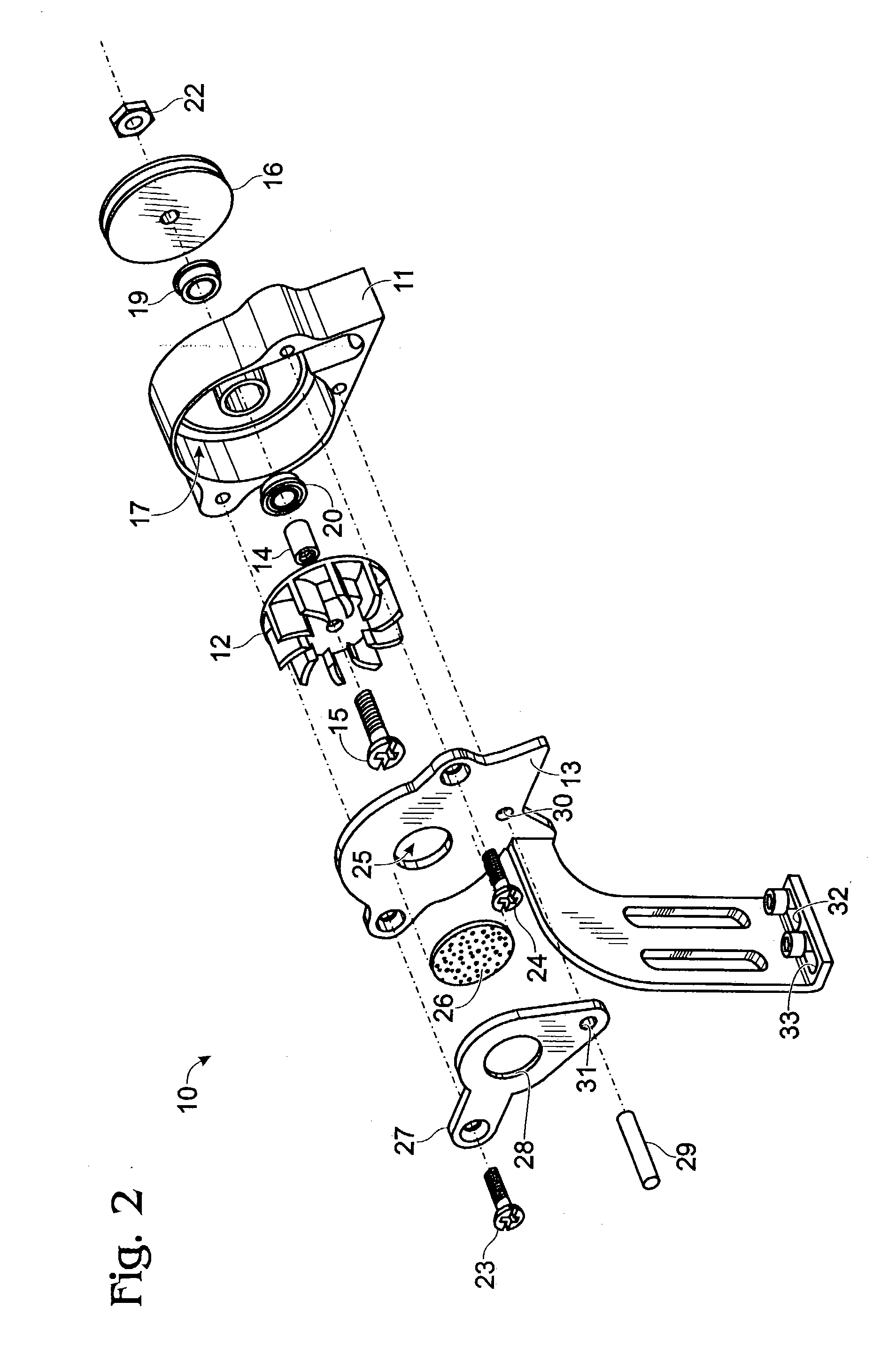Boosting mechanism for internal combustion engines
a technology for internal combustion models and boosting mechanisms, which is applied in the direction of machines/engines, cell components, machine/engine details, etc., can solve the problems of lag in engine response, non-efficient flow of fuel to the carburetor, and volume of exhaust gases of the engine, so as to eliminate the reverse flow of fuel, increase the power output of the engine, and eliminate the effect of gradual increas
- Summary
- Abstract
- Description
- Claims
- Application Information
AI Technical Summary
Benefits of technology
Problems solved by technology
Method used
Image
Examples
Embodiment Construction
[0028] Referring now to FIG. 1, the supercharging device 10 is capable of being mounted on various types of model engines using the slots 34, 35 (FIG. 2) on the engine mounting bracket 13 for alignment. Standard model engines have a mounting flange on each side of the engine. Bolts 32, 33 (FIG. 2) are installed through slots 34, 35 of engine mounting bracket 13 securing supercharger assembly 10 to the given engine mounts. The spacing between the mounting holes 34, 35 varies for different engine types. The slots 34, 35 in the supercharging device's mounting bracket 13, however, allow the supercharging device 10 to be mounted on all standard types of model engines. The slots 34, 35 also allow for front to rear travel to align the drive pulley 16 on the supercharging device 10 to the engine pulley 36. In one embodiment, the standard engine flywheel is replaced with a modified flywheel in which the thickness has been reduced to accept a an engine pulley 36 that is the same thickness by ...
PUM
 Login to View More
Login to View More Abstract
Description
Claims
Application Information
 Login to View More
Login to View More - R&D
- Intellectual Property
- Life Sciences
- Materials
- Tech Scout
- Unparalleled Data Quality
- Higher Quality Content
- 60% Fewer Hallucinations
Browse by: Latest US Patents, China's latest patents, Technical Efficacy Thesaurus, Application Domain, Technology Topic, Popular Technical Reports.
© 2025 PatSnap. All rights reserved.Legal|Privacy policy|Modern Slavery Act Transparency Statement|Sitemap|About US| Contact US: help@patsnap.com



